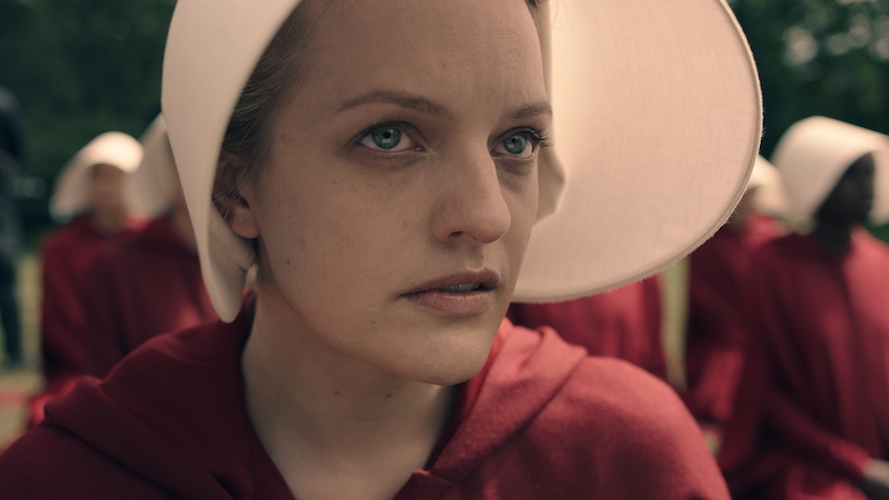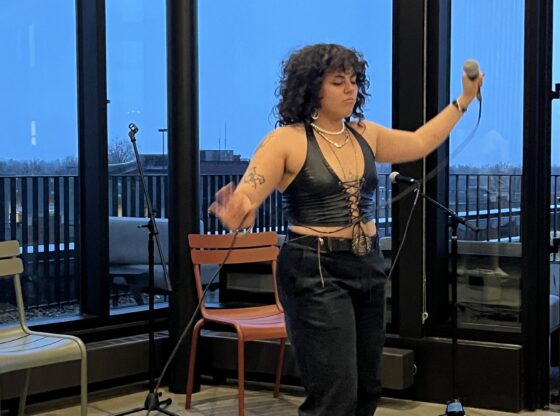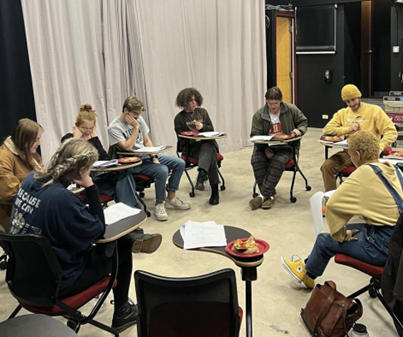On Wednesday, April 26, Hulu released the first three episodes of their new, highly anticipated television show “The Handmaid’s Tale.” Based on the 1986 novel by Canadian author Margaret Atwood, the Hulu adaptation takes the original novel and brings it to visually stunning fruition. The novel itself is critically acclaimed, but good source material doesn’t always result in a good adaptation (see: the 1990 movie adaptation of the same novel). However, the case of “The Handmaid’s Tale” could not be more opposite.
The novel and the show tell the story of a world where an extremist, conservative Christian government has taken over the United States, calling it Gilead. Women no longer have the right to read or own property and those few women who are fertile are handmaids—“wombs with two legs,” Offred (Elisabeth Moss, “Mad Men”) calls them. The main character and the narrator, Offred is a handmaid in the home of a powerful commander (Joseph Fiennes, “American Horror Story”) who is supposed to impregnate her since his wife (Yvonne Strahovski, “Dexter”) is supposedly infertile. Women in this world are chattel, all relegated to specific roles.
The show is narrated by Offred, her sarcastic and acerbic narration showing a sharp, intelligent woman who refuses to fully submit but also realizes that to survive and somehow find her way back to her young daughter she has to play her role convincingly. However, unlike the book, which is limited by the constraints of Offred’s first person narration, the show moves beyond what Offred can see to delve deeper into the trappings of Gilead. When Atwood wrote the novel, she created a world that fascinated readers and the show’s exploration of Gilead only makes it stronger. Flashbacks to Offred’s life before with her husband and daughter and best friend Moira (Samira Wiley, “Orange Is The New Black”) show how this totalitarian state came to be.
Outside of the narration, not much is actually said between the characters; they all meticulously follow the script of their world. Instead, everything is interpreted through glances and movements. Moss and Alexis Bledel (“Gilmore Girls”), who plays Offred’s fellow handmaid Ofglen, are masters of this. Moss’s constant hesitation as she carefully measures every word she says makes the viewer just as fearful as she is. In the third episode, Ofglen spends much of the episode physically unable to speak, but Bledel is able to effectively communicate the character’s fear and pain and desperation only through her body language, to a chilling effect. Both women are restricted by this new world’s customs, their clothing and their fear of being killed, and they find other ways to communicate.
It’s the show’s sense of humor that really makes it resonate. Desperation and fear are palpable in nearly every scene, but the few moments of levity, albeit very dark levity, draw the viewer in and make it seem more human. Of course, these moments are typically followed by something brutal, but the almost absurd appearances of a Prius or the use of a Simple Minds song or a sarcastic comment by Offred serve to show that Offred has not given up hope. But it also serves as a reminder that this is based off our world, and that this—or something like it—is what can happen when we’re not paying attention. However, in the long run, it’s a show about hope and survival, and humor and memories of her previous life are how Offred survives.
Every second of the show is as meticulously crafted as all of Offred’s responses and it shows. The show is visually beautiful, the soundtrack is haunting, the sets simultaneously alien and familiar and the costumes pretty much perfect. It is a faithful adaption of the novel but has its own life beyond the book, changing and rearranging where the showrunners see fit. In the end, “The Handmaid’s Tale” is so far one of the best new shows of the year.
Episodes are available every Wednesday on Hulu for the rest of the 10 episode run.











